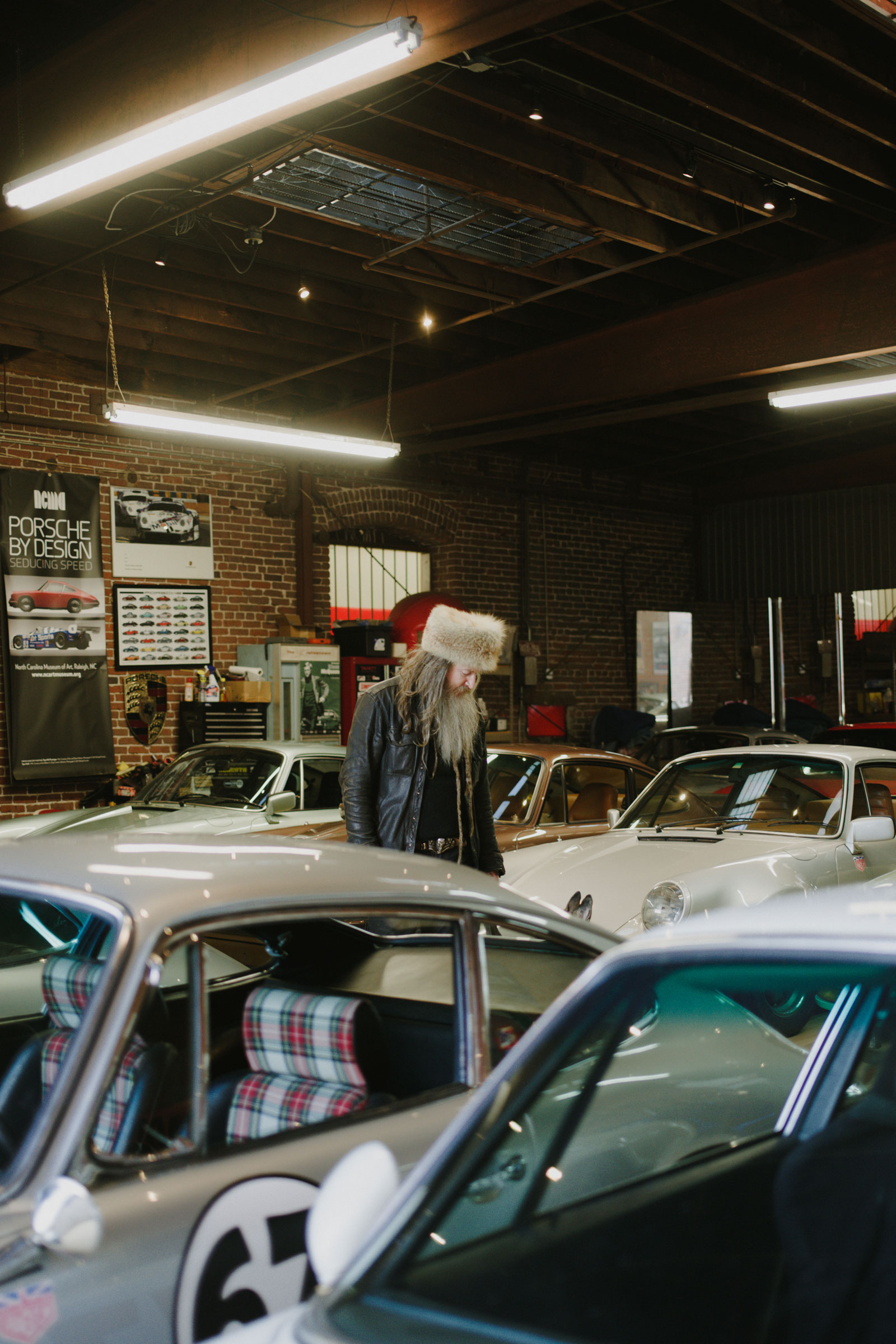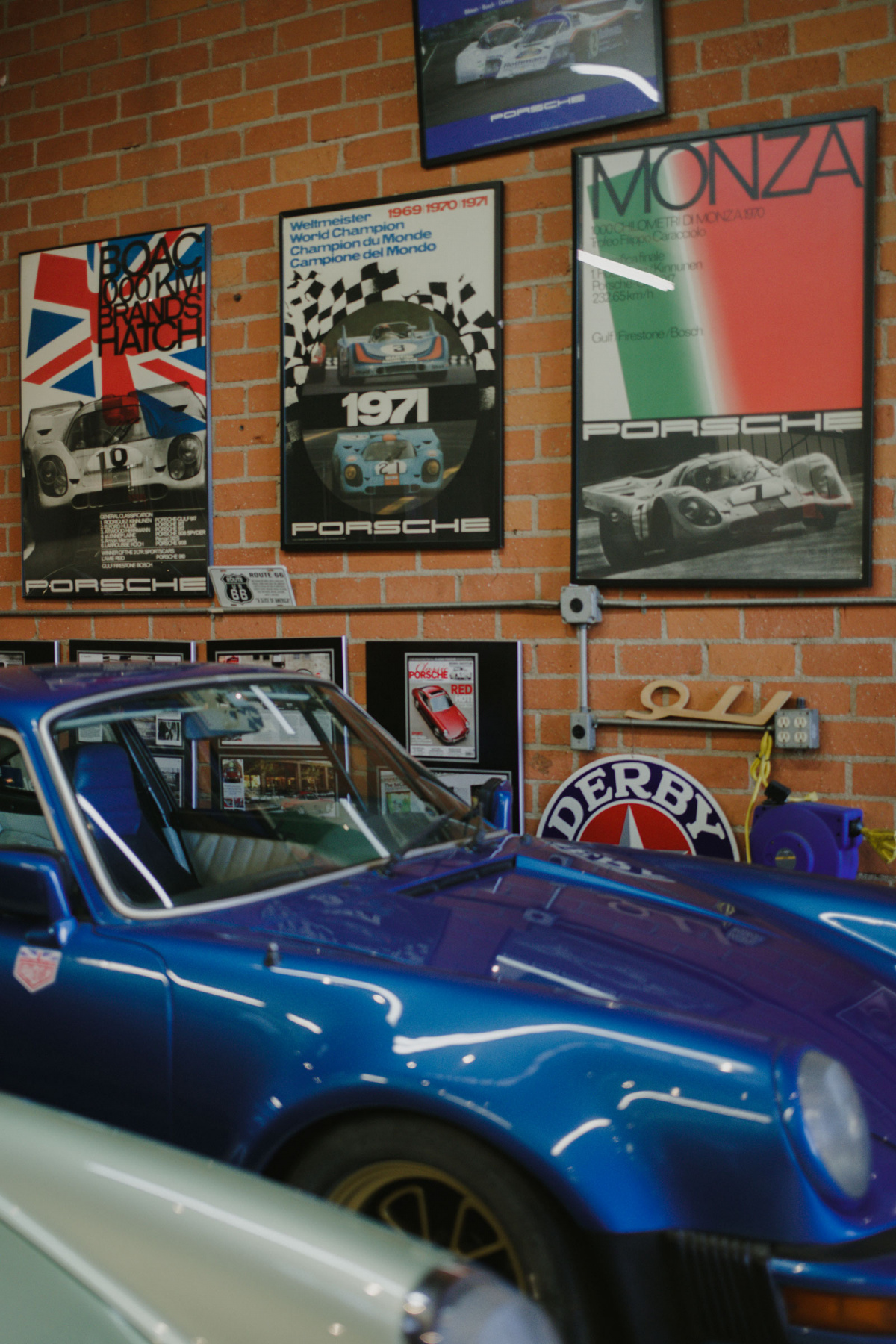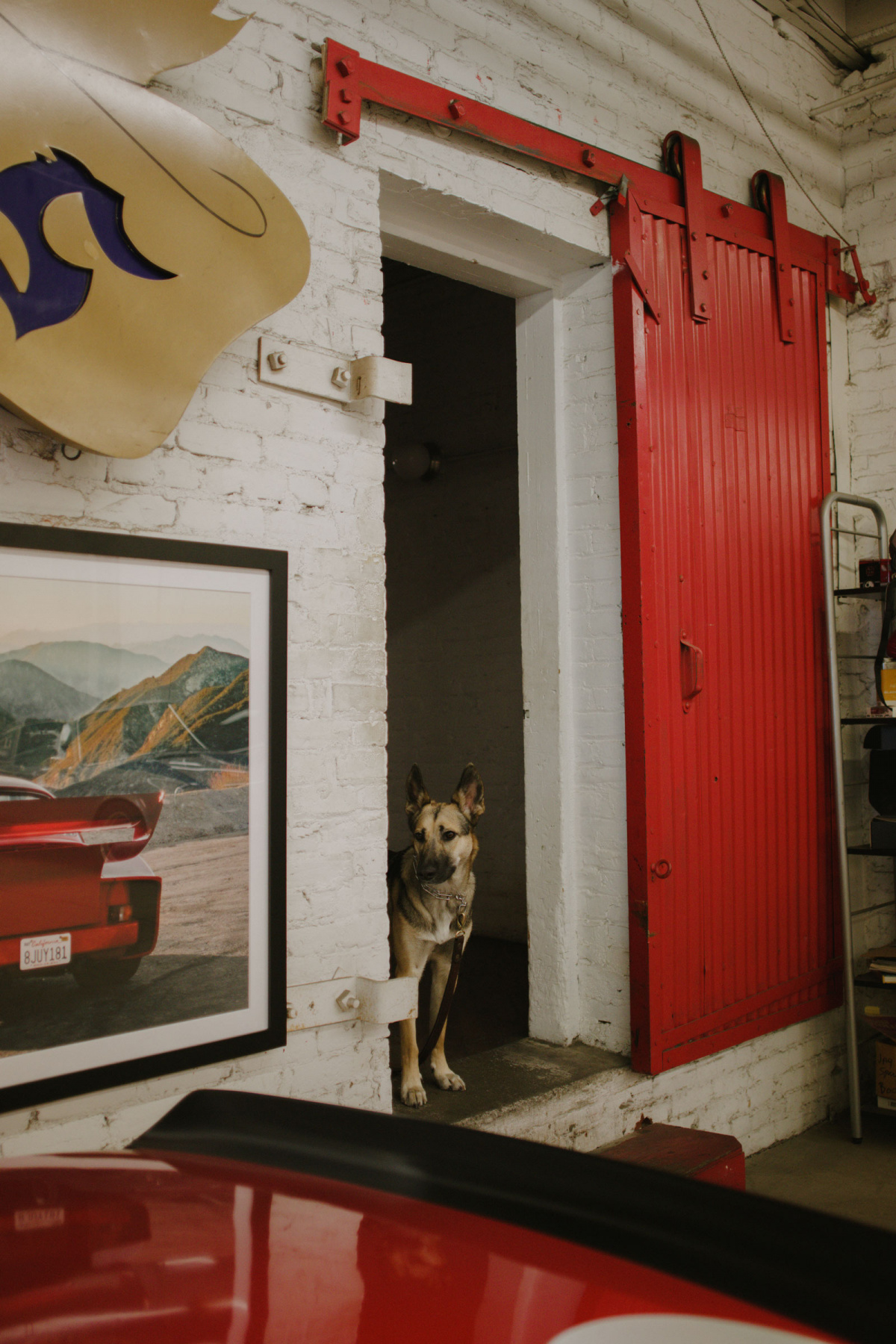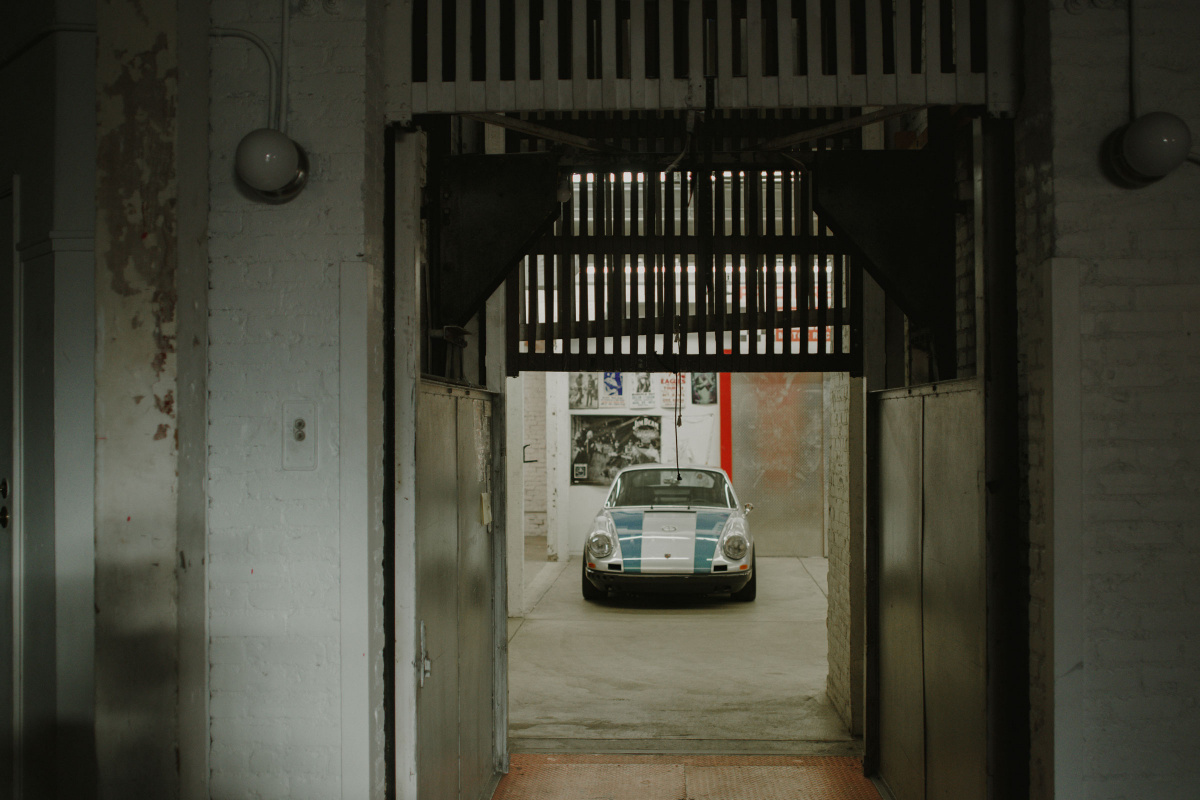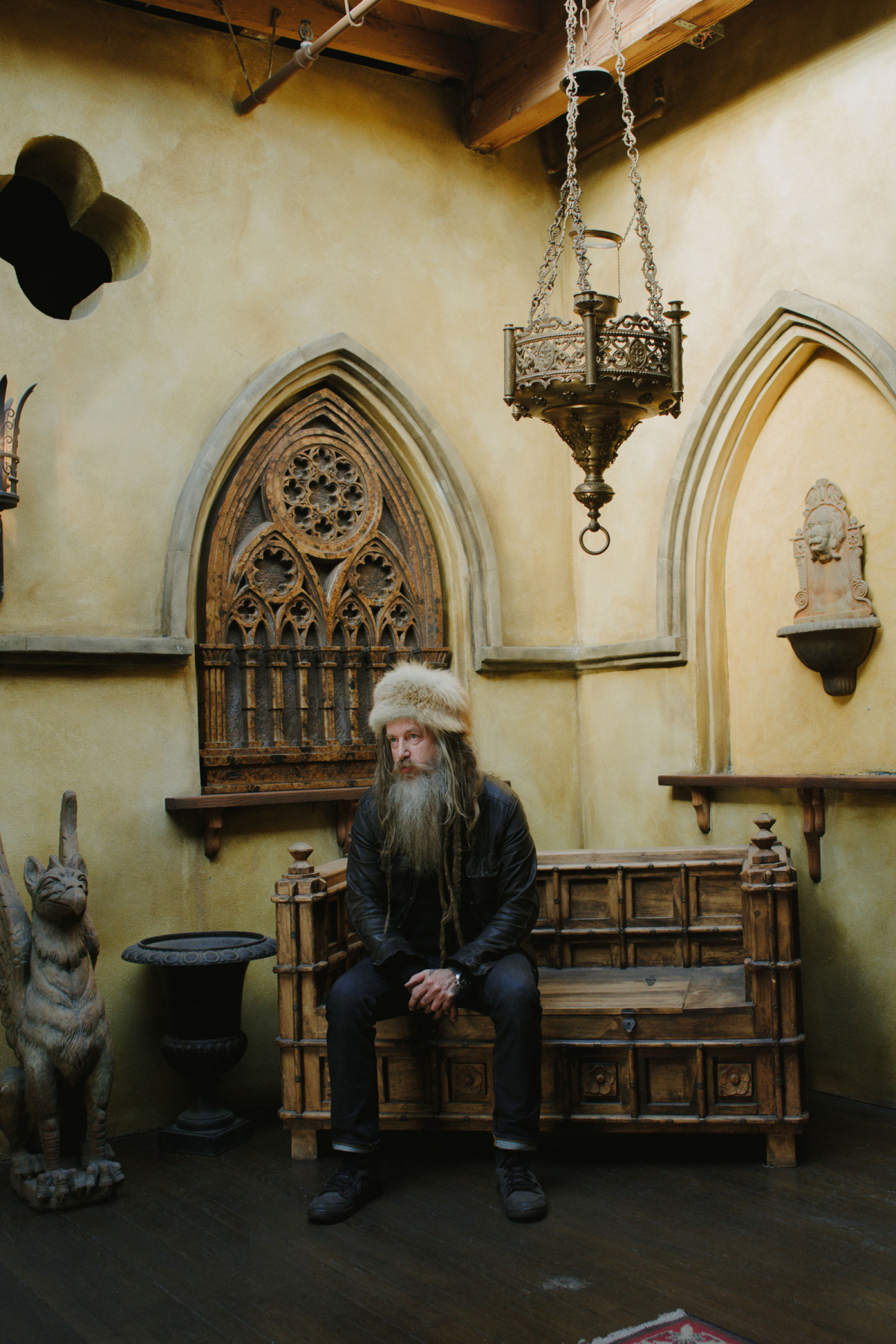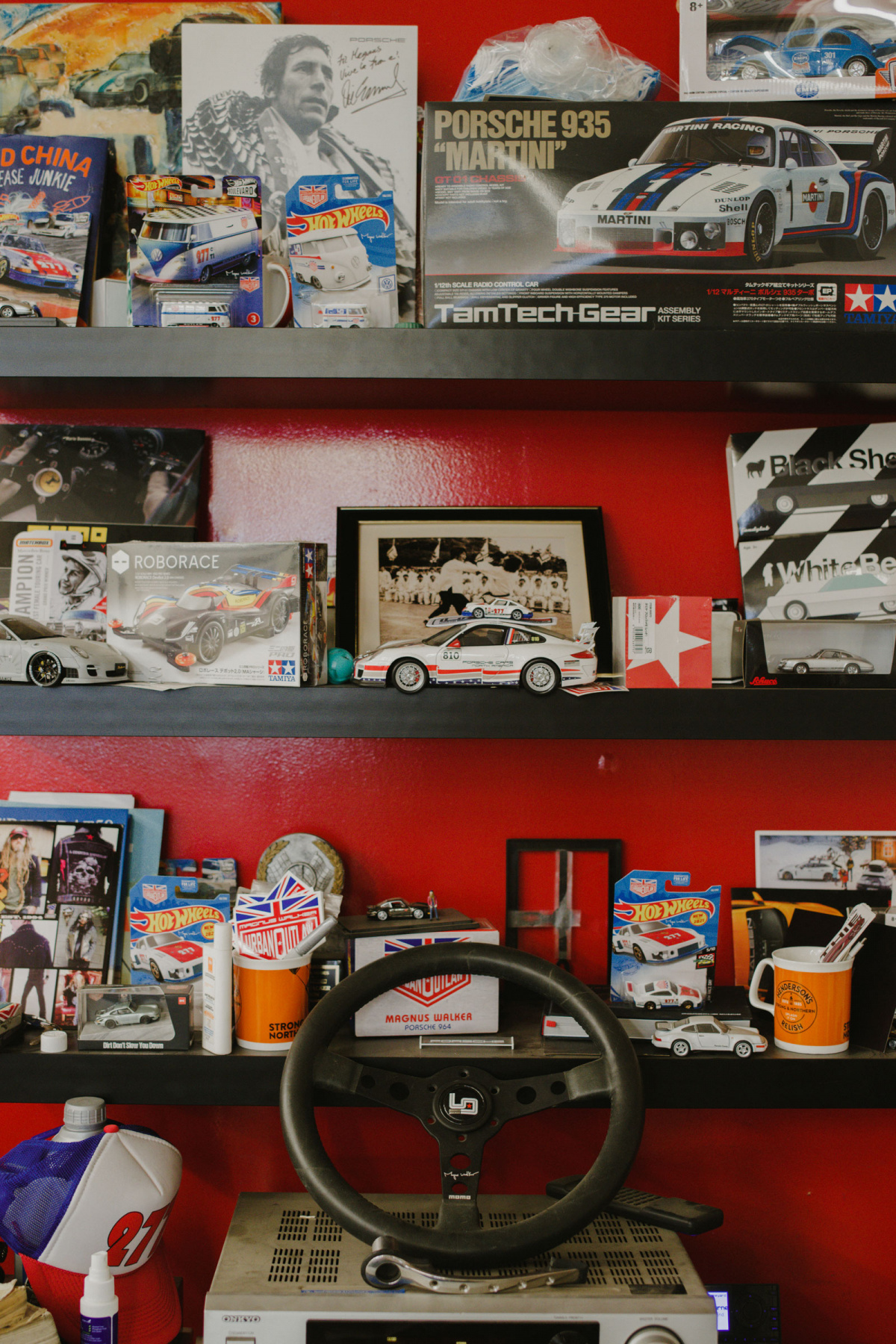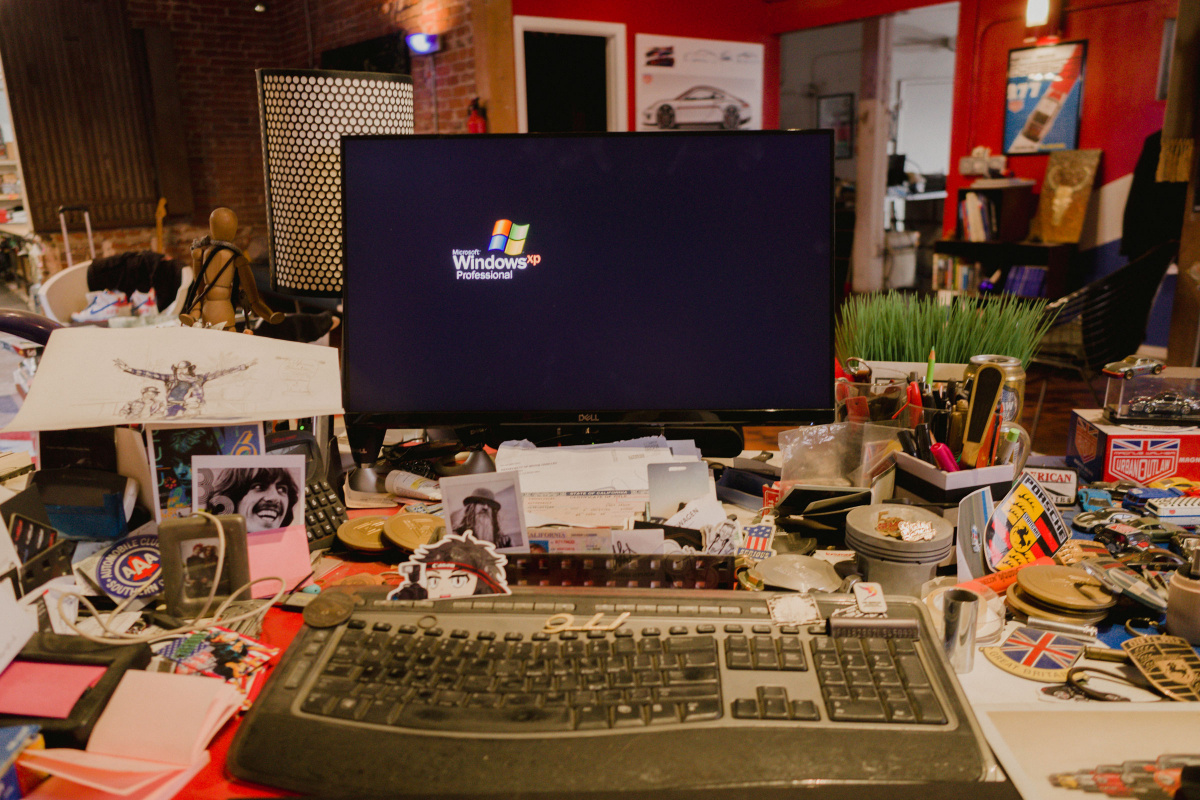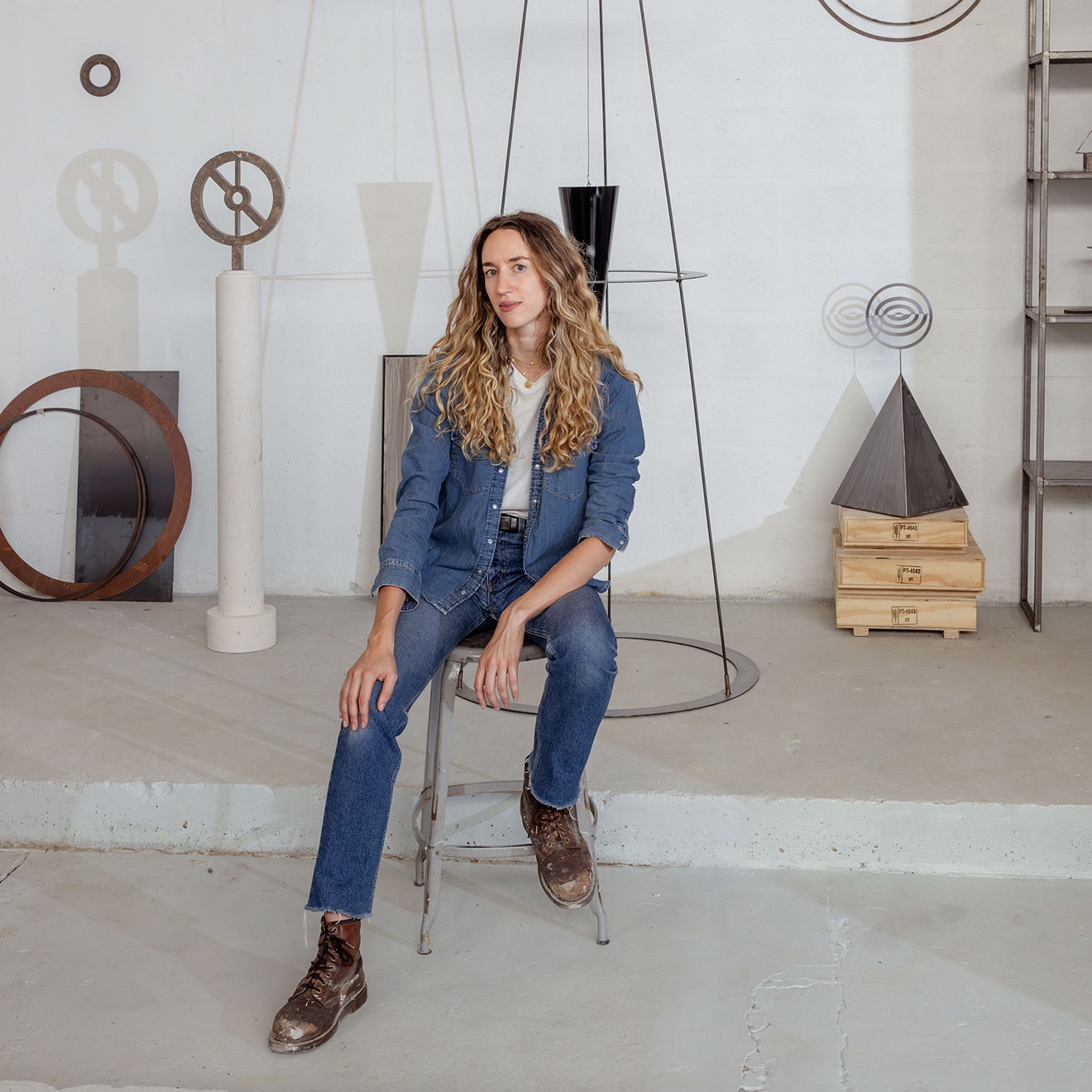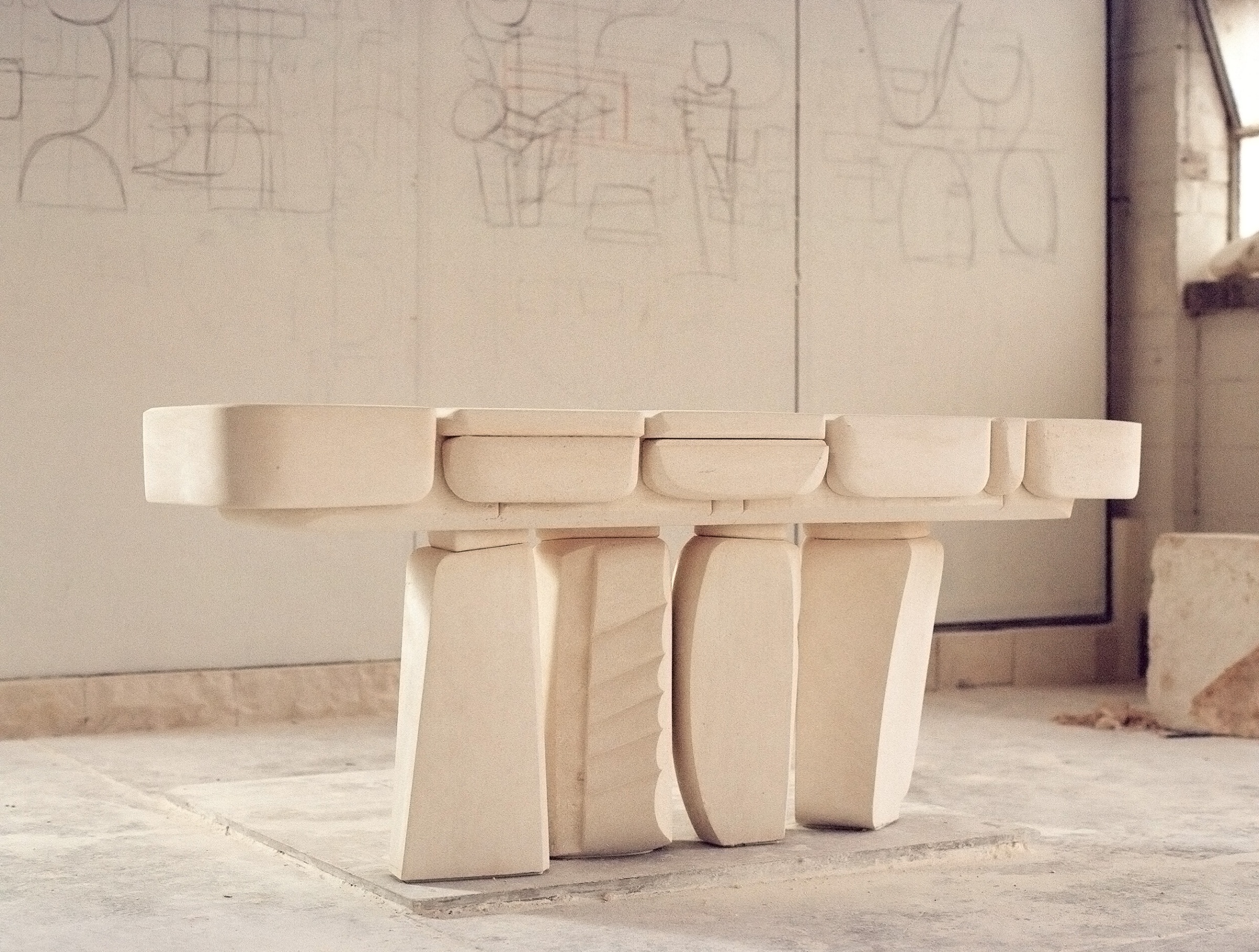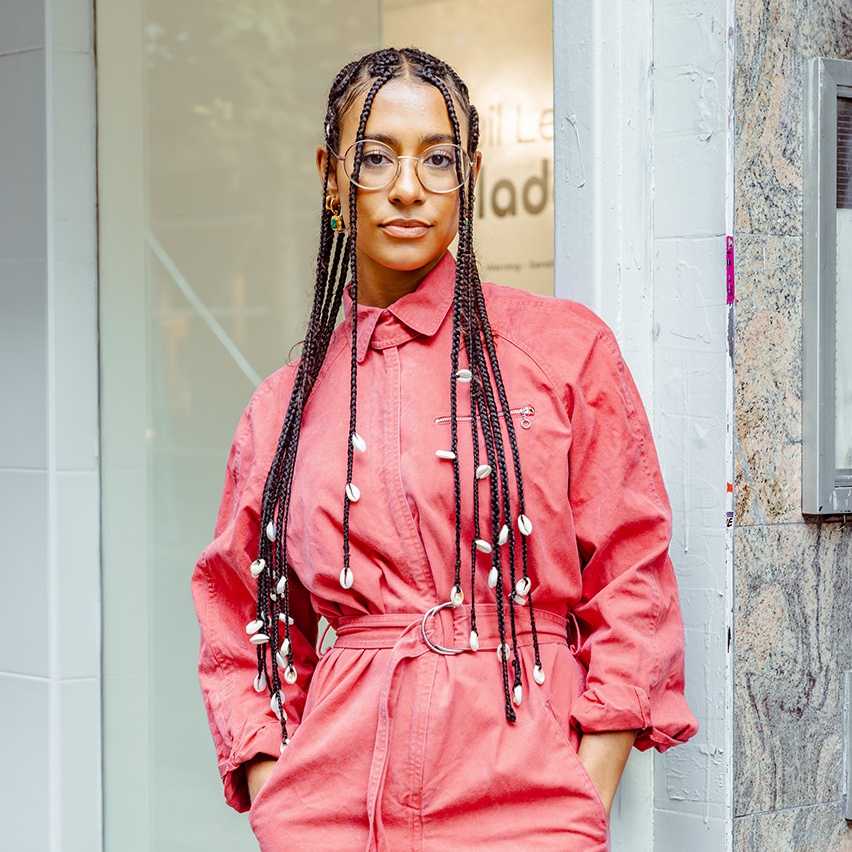Standing in a room of 15 souped-up vintage Porsches, I had to ask the obvious question. Does Magnus Walker ever get speeding tickets?
“Yes I do,” Magnus replies, a bit of rebellious pride in his voice. He got his most recent speeding ticket on the Angeles Crest Highway—a two-lane highway just northwest of downtown LA—in August 2019. It was a Sunday morning, prime time, and at a joyriding hot spot. Magnus knew better than to speed at such cop-heavy hours, but this ticket, he resolved, wouldn’t be like the others. After years of whipping up and down the Angeles Crest, and years of paying LA County for traffic violations, “I finally decided, fuck it. I’m going to do one of those ticket clinic things (online traffic school to keep points off your record).”
The date got pushed back, back, back, and then COVID hit. But 18 months after receiving the citation, Magnus proved his law-abiding aptitude to the State of California in traffic school. Well, first he had to buy a laptop since he didn’t actually have a computer, but then he aced the test. “The first thing I did on my first laptop was traffic school,” he laughs. “I spent a lot of money on a laptop so I could do traffic school on a laptop to get out of a speeding ticket.” Yes, Magnus likes to do things his own way.
In early 2021 we’re standing in Magnus’ garage, the crown jewel of his 26,000-square-foot warehouse in the LA Arts District. Brick walls are plastered in vintage car paraphernalia—an old 76 gas station sign, a 1971 Porsche world championships poster, and magazine clippings of Magnus himself, one headlined “The Urban Outlaw.”
- Many of Magnus’ cars are painted in reds, whites, and blues, a nod to his nationalities as a British-born US citizen. Photo by Chantal Anderson
- Magnus’ German Shepherd, Willow, romps with him among his many cars. Photo by Chantal Anderson
Then, of course, there are the cars. Most of Magnus’ collection is vintage Porsches from the late 1960s to mid-1970s—the glory years of what he calls “streetable track cars” you can both race and drive to the store. Many of them are painted in shimmery blocks of reds, whites, and blues, for the Union Jack and the Star-Spangled Banner, a nod to Magnus’ nationalities as a British-born US citizen.
Car collecting isn’t a business for Magnus but a hobby. He buys old Porsches and soups them up himself with custom parts and paint jobs. “When people think of Porsche, they think of the 911,” he tells me. “My thinking is, get one of everything Porsche’s ever made, not just 911. All the oddball 924s, 928s, 914s.” He does this often, rattling off Porsche models by number, like I can tell the difference. (I’ve parked my practical Subaru Crosstrek out on the street, lest she suffer comparison to Magnus’ hot rod collection.)
Though the collecting and customization might just be a hobby, it’s secured substantial business for Magnus. He’s become somewhat of a celebrity in the vintage car collector world—the subject of the short documentary, Urban Outlaw, inspiration for a limited edition line of Hot Wheels cars, and the host of The Next Big Thing with Magnus Walker, a YouTube show where he explores vintage cars that aren’t Porsches.
- Magnus’ main passion is collecting and customizing vintage Porsches—especially those from the late 1960s to mid-1970s, and especially the “oddball” ones, he says. Photo by Chantal Anderson
Each day for Magnus looks a little different than the one before. He wakes up around 6am at his apartment around the corner from his studio and goes to get a coffee around 7—there are at least eight Arts District coffee shops within walking distance. Convenience is one of the pluses of the area’s day-and-night gentrification, but Magnus misses its old, quiet grittiness.
On the day we met, Magnus had done an Instagram Live event with Ferrari at 8am, took a call for season two of The Next Big Thing With Magnus Walker at 9, then another call with LEGO. He doesn’t have a manager or team, so he’s the one on calls in his office, which, too, is plastered with sportscar paraphernalia. After lunch he’ll relax in his hammock in the small courtyard he and partner Hannah filled with plants during the pandemic. Then another coffee. He’ll tinker with cars—he’d removed a taillight from one car and attached it to another just before I arrived. The day I visited Magnus was preparing to launch a series of posters he’d created in collaboration with the Santo Gallery: six photos shot by Daniel Malikyar of some of Magnus’ favorite Porsches across LA.
“I’ve never had a real job. I’ve never worked for someone else. The things I’ve been able to excel at were things I really had a passion for.”
Unless you’re already familiar with Magnus, you’d probably do a double-take if you saw him on the street. The Sheffield-born Angelino has a chest-length gray beard and a heap of dreadlocks, some reaching the middle of his back. He says he hasn’t cut his hair since he was 20, and he’s now in his 50s. But the second he speaks, his intimidating, tough guy facade fades. His voice is friendly and self-assured (maybe it’s the British accent), and he lands hard on the last word of each sentence he speaks. His German Shepherd, Willow, wiggles playfully on a short leash, licking our photographer at every off-lead chance she gets.
Today Magnus is wearing dark-washed blue jeans, a black leather jacket, and a reddish, Russian-style fur cap that adds about three inches to his already imposing height. He bought the hat for Hannah in Jackson Hole a couple years back and recently rediscovered it. “I’m a man of many hats, but I wear the same hat for like six months until I get bored of it. Then it’s old hat.”
Magnus’ ethos toward hat-wearing resembles his attitude toward creativity. He’s worn many metaphorical hats: fashion designer, car guru, producer, documentary star. He considers himself an artist and a creative, but his focus shifts every decade or so. He attributes this to his ability to stay in the moment and follow his gut. In the ’90s and ’00s he ran a clothing line called Serious that he founded with his late wife Karen. He never studied fashion or planned to become a designer; he just noticed people in LA liked his style, and he found a way to profit from that. “I’ve never had a real job,” he says. “I’ve never worked for someone else. The things I’ve been able to excel at were things I really had a passion for.”
- Magnus’ 12,000-square-foot loft above his warehouse work space is distinctly medieval in style, with literal gargoyles and Gothic arch doorways. Photo by Chantal Anderson
- Magnus’ LA warehouse space is full of spare Porsche parts, as he collects cars and adds custom parts and paint jobs. Photo by Chantal Anderson
Passion, yes, and a wise real estate decision in a neighborhood on the cusp of gentrification. In 2000 he bought a warehouse in LA’s Arts District, working in the Serious workshop downstairs and living in the 12,000-square-foot loft with Karen upstairs. The couple soon realized they could make a buck renting out the loft as a film set, which took off—America’s Next Top Model, Missy Elliott’s “Tweet” video, and American Idol all shot there, among others.
Willow, the puppy, isn’t allowed in the loft. That turf belongs to Magnus’ 12-year-old cat, Jet, though Willow knows how to get to the roof. We hear her padding around above us, nosing at the skylights as Magnus shows us the loft. It has a distinctly medieval vibe, with literal gargoyles and Gothic arch doorways. The income from renting the loft allowed Magnus to get into his real passion—refurbishing vintage Porsches.
Retrospect comes easy to Magnus. He nonchalantly rattles off how he’d never have the Porches without the warehouse, how he’d never have the warehouse without Serious, how he’d never have gotten into fashion without trusting his gut. Perhaps when he looks back at this time, he’ll think of it as his post-Karen era. He and his wife were together from 1994 until she passed away in 2015. They were partners in business and life: They designed clothes together, bought the warehouse together, rented it for production together. Everything Magnus is now he built with Karen. “We were a team, right?” he says. “We knew each other’s strengths and weaknesses.”
- Magnus isn’t one for computers. He just bought his laptop this year—and only so he could complete online traffic school. Photo by Chantal Anderson
Much of Magnus’ recent years were spent adapting to creative life without a partner. That’s meant gaining self-confidence to move on without a sounding board. Traveling helped him work through his grief. Then he met a second love of his life. “I’m five years in now,” he says of life without Karen. “It’s different. I’m a lot more comfortable than I was two, three years ago.” There’s a good creative spirit in the loft, he says, which has allowed him to slowly move on. But Magnus has never been one to predict the future. It’s always one day at a time.
Hopping in my Subaru after hours with classic sports cars was, well, a disappointment. But some of Magnus’ confidence stuck with me on the drive home. I live off the 110, an old freeway with thin lanes and short on-ramps, making merging during rush hour a terrifying affair. But not today. Fuck it, I thought. Instead of waiting for a huge safe car gap, I floored the gas, forcing my hatchback to heave into the flow of traffic. I arrived home in one piece to a text from Magnus, thanking me for the visit. I told him he inspired me to pump the gas on the way home. “Pedal to the Metal!” he texted back, with three emojis: two rock on hands and a checkered racing flag.
A version of this article originally appeared in Sixtysix Issue 06 with the headline “Magnus Walker: Designer, LA.” Subscribe today.
